Yao People Introduction
2015-09-04 01:14:15 Author:culture Source:National culture Browse number:0 Comment 0 A
As a matter of fact, Yao people are very versatile, productive and intelligent, who are renowned for assorted festivals such as Panwang Festival, extravagant attires, marvelous crafts, exotic love and marriage customs, diversified singing and dancing as well as the time-honored herb Spa with outstanding medical properties.
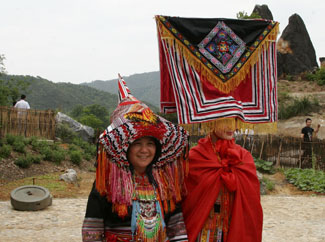 |
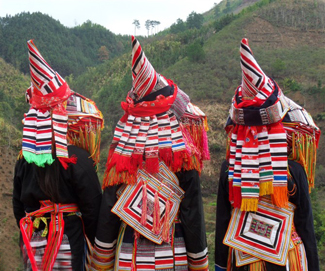 |
| Guoshan Yao | Guoshan Yao |
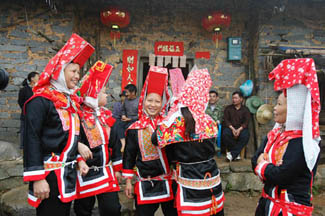 |
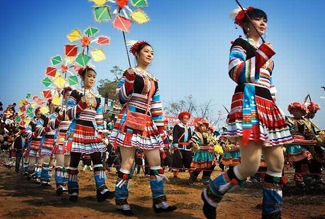 |
| Daban Yao | Pai Yao |
Distribution
Numbered at over two million, Yao people are scattered in southern and southwest China’s Gangxi, Guangdong, Hunan, Guizhou and Yunnan as well as Southeast Asia. 60% of Yao people center on Guangxi. Over 170 thousand Yao people are distributed in Yunnan. With few occupying the river valleys or hilly slopes, the majority are found in high mountains. To highlight its extensive footprints, a saying goes like this: every hill in south China is occupied by Yao people.
China has 12 Yao autonomous counties and over 200 Yao autonomous townships. Here goes the detailed list:
| Guangxi | Gongchen Yao Autonomous County (恭城瑤族自治縣),Fuchuan Yao Autonomous County (富川瑤族自治縣), Du’an Yao Autonomous County (都安瑤族自治縣), Jinxiu Yao Autonomous County (金秀瑤族自治縣), Bama Yao Autonomous County (巴馬瑤族自治縣) and Dahua Yao Autonomous County (大化瑤族自治縣) |
| Guangdong | Ruyuan Yao Autonomous County(乳源瑤族自治縣) Lianshan Zhuang and Yao Autonomous County(連山壯族瑤族自治縣) Liannan Yao Autonomous County(連南瑤族自治縣) |
| Hunan | Jianghua Yao Autonomous County(江華瑤族自治縣) |
| Yunnan | Jinping Miao Yao and Dai Autonomous County(金平苗族瑤族傣族自治縣) Hekou Yao Autonomous County(河口瑤族自治縣) |
Four subgroups of Yao Nationality
since Yuan dynasty, Yao people have frequented the frontier area where Hunan, Guangxi and Guangdong meet. Living by farming and animal husbandry, they mingled with Han Chinese and yet clung to their own traditions. The following dynasties saw their lifestyles changed dramatically and four main subgroups emerged, with each has its own distinctive features. They are Pan Yao(盤瑤), Bunu Yao, Chashan Yao(茶山瑤) and Pingdi Yao(平地瑤) respectively. Pan Yao constitute the majority of Yao population, who speak standard Yao language; Bunu Yao speak Bunu Lanuage, while Pingdi Yao speak mandarin. These four subgroups fall into 39 branches in total. To our astonishment, Yao boasts over 400 nicknames, which are based on their different headgears, habitats, lifestyles, totems, family names, political doctrines and ancestral worships. For instance, those who favor red clothes are grouped into Red Clothes Yao, those good at planting tea are named as Chashan Yao and those worship Panhu are labeled as Panyao.
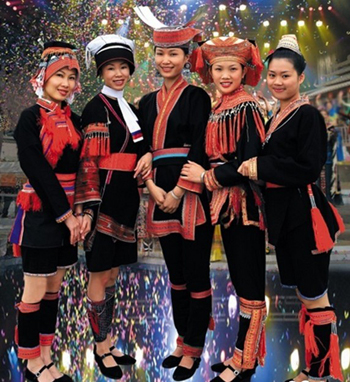 |
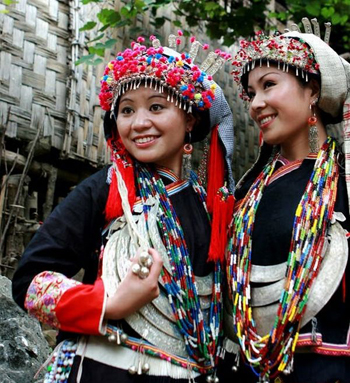 |
| Chashan Yao | Bunu Yao |
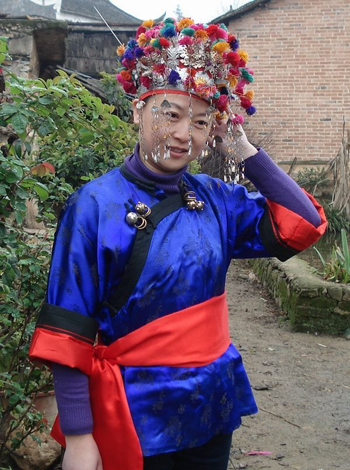 |
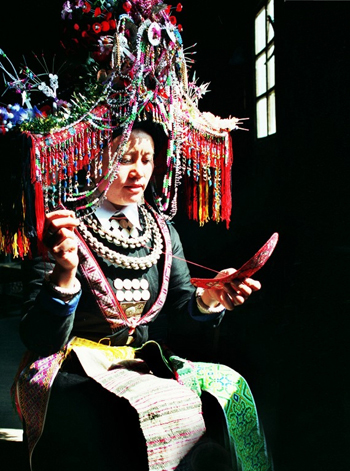 |
| Pingdi Yao | Pan Yao |
On A: Zoom In Zoom Out Mongolia People: Warriors from Northern Grassland
Next article: Traditional Medicine and Medicinal Baths














